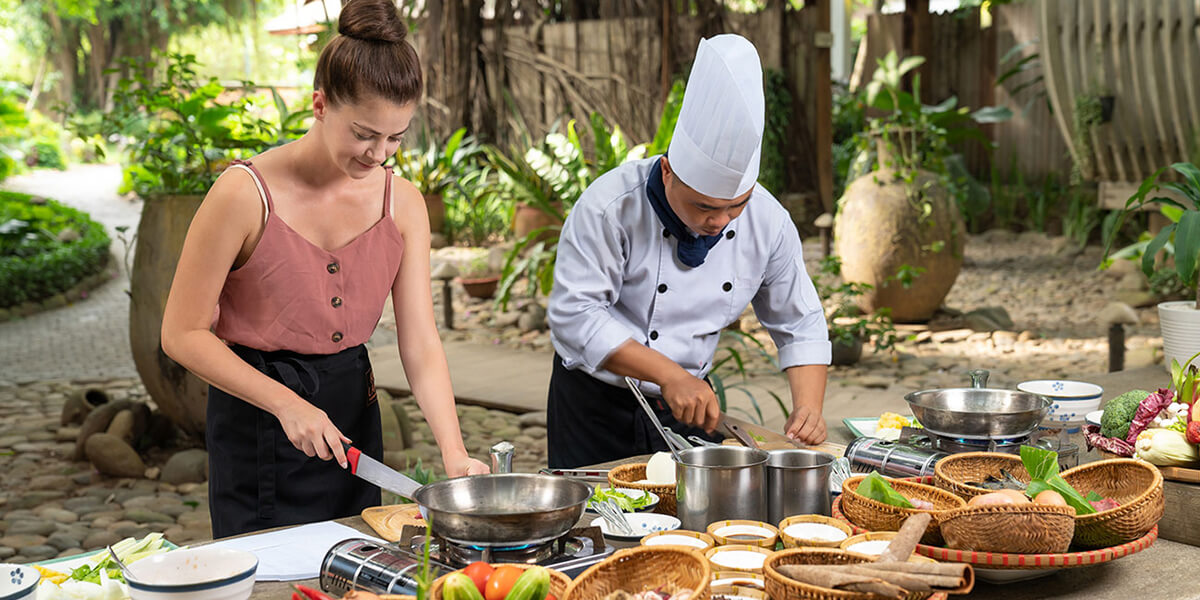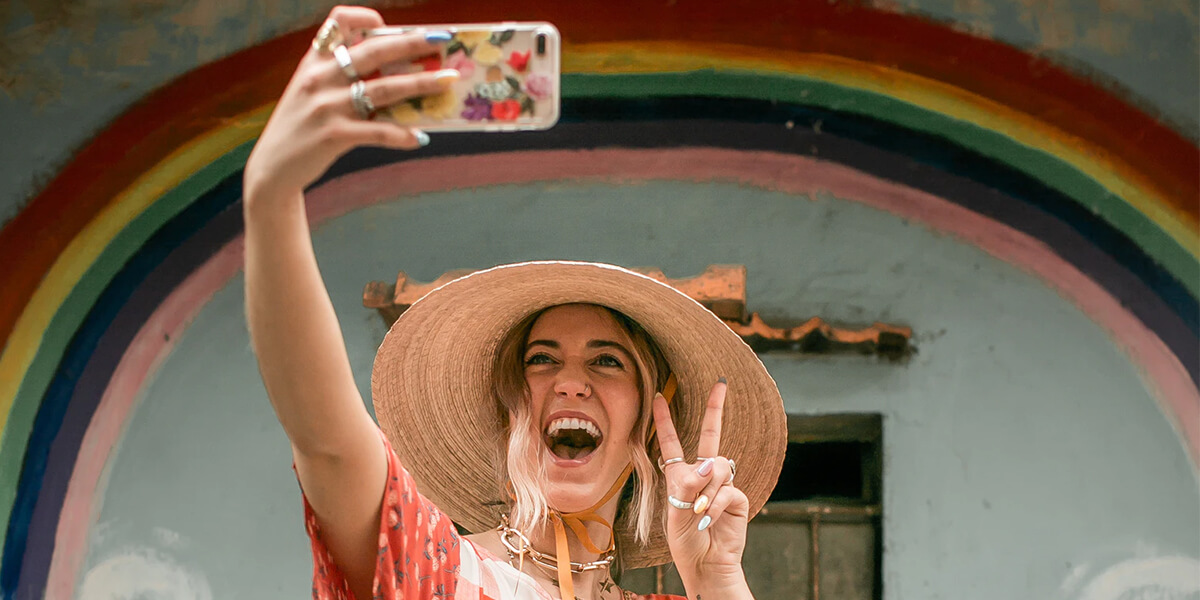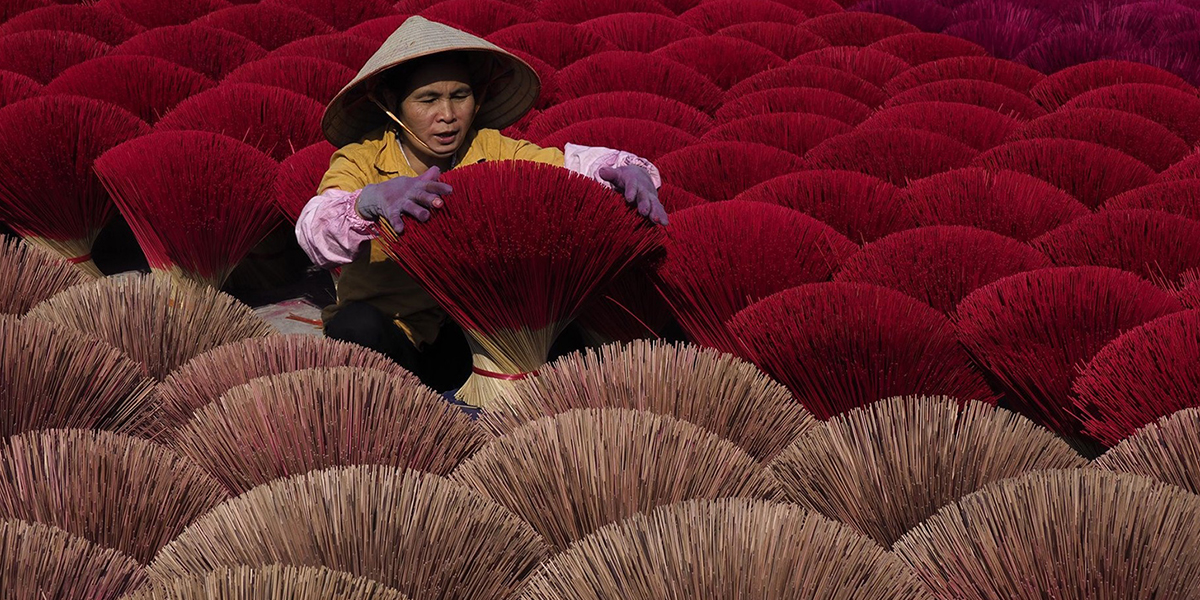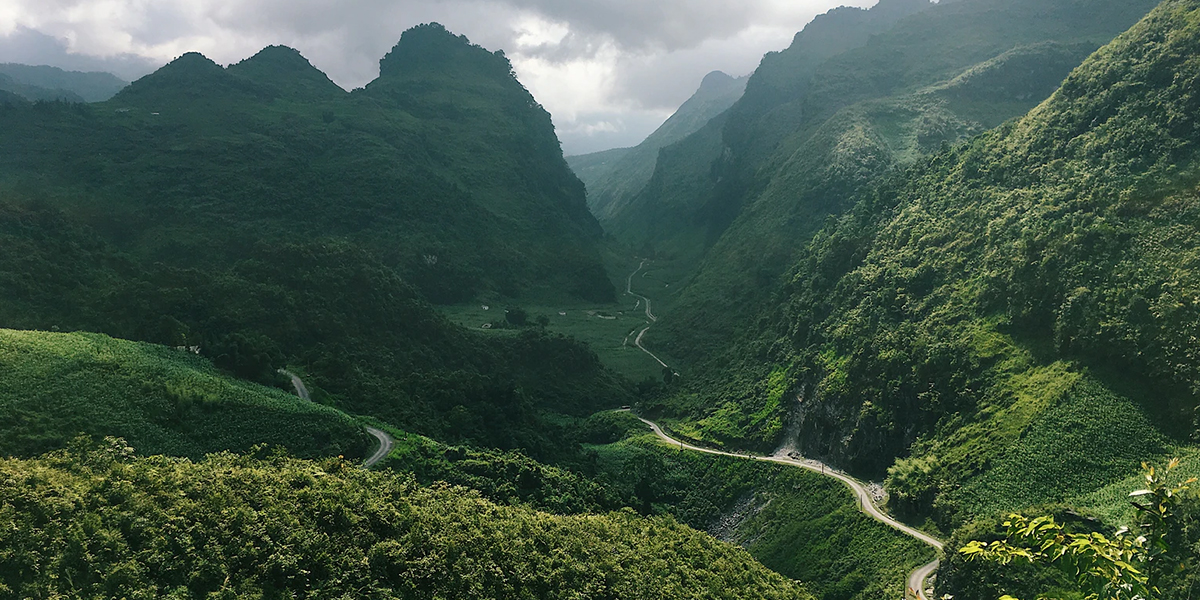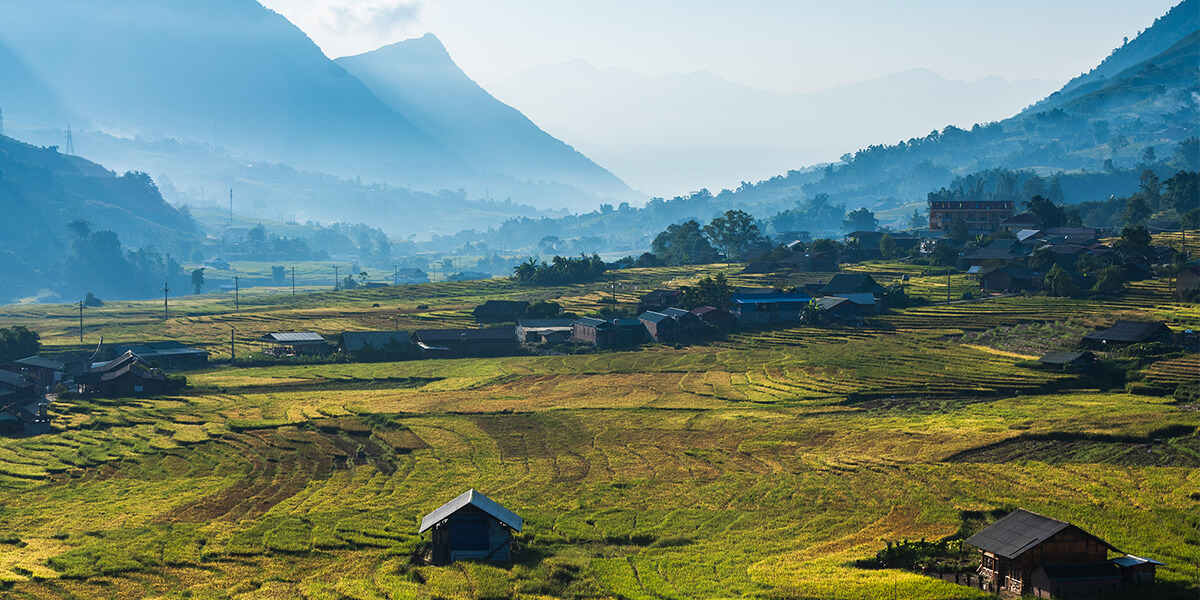Known as the largest ancient citadel in Vietnam, the Co Loa citadel is about 500 hectares wide, built by King An Duong Vuong in the 3rd century BC to be the capital of the Au Lac state (the name of Vietnam at the time), now located in Dong Anh district, outskirt of Hanoi.
Back in the past, perhaps the Au Lac state would have been an extremely brilliant and long period in the history of Vietnam if An Duong Vuong had not formed a marriage alliance with the enemy and let the country fall into the hands of Zhao Tuo (a Qin dynasty Chinese general). My Chau (king's daughter) was beheaded by the king, and Zhong Shi (son-in-law) regretted that he threw herself into Ngoc well. The Co Loa historic site, therefore, became a witness to the tragedy.
I - The unique architecture of Co Loa Citadel
Co Loa, had a design resembling a snail, which was the reason why it was given the name (“Co” means ancient while “Loa” means snail). According to legend, the citadel of Co Loa consisted of 9 spirals, but currently there are only 3 left. The citadel was said to be built up simultaneously with the moat. The outside of the rampart is vertically sloping while the inside is flat. This feature created challenges for the outsiders while making it favorable for warriors staying inside.

The restoration photo of Co Loa citadel - Source: huynhhieutravel
The inner citadel is rectangular, with an average height of 5m above the ground, used to be the residence of the King and the royal family. Middle Citadel is a wall without a symmetrical shape, 6,500m in circumference, 10m high at the highest point, 10m wide on average, with five gates in the east, south, north, northwest and southwest directions, of which the east gate connected with the Hoang River. The outer citadel no longer has a clear shape, with a circumference of more than 8,000m, an average height of 3m-4m (in some places more than 8m).
Each round of Co Loa citadel was surrounded by a moat that is from 10m to 30m wide on average. The moats were all connected to each other and to the Hoang River. The combination of rivers, moats and walls of no definite shape made the citadel like a maze, a military construction that was both good for attack and defense.
Nowadays, when entering the citadel gate, you catch the sight of Ngu Trieu Di Quy communal house featuring a door heading to the Ngu Trieu Di Quy communal house. According to legend, this was constructed on the old foundation of the imperial palace, where the imperial mandarins held meetings.

Co Loa citadel has a history of more than 5000 years - Source: nguoiduatin
Next to the communal house is the Temple of My Chau princess. Passing My Chau temple, you come to Thuong temple, i.e. An Duong Vuong temple, which is said to have been built on the foundation of the inner palace in the past. In front of the temple is Pearl Well, which is supposed to be where Trong Thuy committed suicide because of regret.
Co Loa citadel has a series of archaeological sites reflecting the development of the Vietnamese people from the beginning to the Bronze, Stone and Iron Ages, of which the most outstanding is Dong Son culture, still considered the Red River civilization in the prehistoric period of the Vietnamese nation. The artifacts found here are the Co Loa Bronze Drum, the bronze plowshare collection and the Co Loa mold collection. They are believed to be related to each other and reflect two outstanding achievements of the Au Lac state, namely economic, cultural and social development and defense against foreign invaders.
II - What remains in Co Loa Citadel today?
Under the impact of time and war, the citadel of Co Loa in Hanoi was almost destroyed. Traveling here, visitors have the opportunity to admire the vestiges of the city walls scattered in residential areas, archaeological sites preserved in museums and ancient temples and pagodas... and participate in the Co Loa festival imbued with Vietnamese cultural identity. If you have plenty of time, you should spend 1 day here.
1 - Co Loa Citadel Festival

The Co Loa festival - Source: thanhcoloa
The festival is considered one of the biggest festivals of the year to Dong Anh people. This event had the participation of dwellers of 8 villages worshiping King An Duong Vuong. On January 6 of the lunar calendar every year, villagers get up early to prepare costumes, food, and palanquins, and gather in the East and West of Thuong Temple (where An Duong Vuong is worshiped). At 7 am, the two groups entered the temple and merged into one before entering the yard.
Coming up next of the Co Loa citadel festival is a two-hour-long ritual performed by senior citizens of the villages.
This is considered the most important part of the ceremony because it expresses gratitude of the people to the gods and their wish for a peaceful and fulfilled life.
The rite ends on the 6th while the entertaining part with many attractive folk games such as crossbow shooting, swings, wrestling, human chess, tuong singing, water puppetry,... lasts until January 18th.
2 - An Duong Vuong Temple in Co Loa Citadel

Thuong temple - Source: laodongthudo
An Duong Vuong Temple or Thuong Temple has an area of about 19138.6 m2, built on a high mound that, according to folk beliefs, is the head of a dragon. In the temple grounds, there are two pits that are said to be "dragon's eyes".
Behind the three door gate is the main hall located on the high ground. In front of the hall is the “Tien duong” building, on both sides there are two small gates. Behind the Tien duong is “Thuong dien” house, the most important section with the structure of 5 compartments.
The space inside the Thuong dien house in Co Loa citadel is sacred with the altars arranged vertically. The altar of King An Duong Vuong is placed in the innermost, on a large wooden platform. The center of the main altar is the bronze statue of King An Duong Vuong weighing 255kg, made in 1897. The two sides to King An Duong Vuong altar are the altar to worship the Queen and the altar to worship the Mother Goddess.
3 - Co Loa Museum

Co Loa citadel museum - Source: Congo Doramati
Just some meters from Thuong temple, the Co Loa museum includes 2 floors. The first floor displays the overall physical model, planning diagram and a room showing documentary films, images about the Co Loa citadel. The second floor displays 300 typical archeological artifacts, dating from the Phung Nguyen era to the present, associated with the history of the land of Co Loa - Dong Anh, Hanoi.
- Ticket price: Free
- Opening hour: 8am - 6 pm
4 - Temple of General Cao Lo
Cao Lo is a talented General under King An Duong Vuong, who created the Lien Chau crossbow (a type of crossbow that shot many arrows at the same time) and also the one to command the construction of the citadel. People then made a statue and built a temple to commemorate his merits. The temple now in the Co Loa citadel is small, with a statue of Cao Lo shooting a crossbow in the pond in front of the temple. In the temple, there are still many bronze arrows that archaeologists have unearthed.
5 - Co Loa Communal House
The Co Loa communal house or Ngu Trieu Di Quy communal house was built in 1907 on the foundation of the old imperial palace of the citadel of Co Loa. In the same campus as the communal house, there is Bao Son pagoda and My Chau temple. The communal house has a floor plan in the shape of the word "Ding"(丁), including a large main hall and a back house, located in a spacious campus.

Co Loa communal house in Co Loa citadel - Source: redsvn
The main hall consists of a chamber, two wings, a wooden frame structure, a tiled roof with four curved corners. The back house is connected to the great hall through a set of doors. The center of the back house is the altar to worship King An Duong Vuong and General Cao Lo. Today, the communal house still preserves many typical artifacts of historical, cultural and scientific value.
6 - Temple of My Chau princess
According to folklore, in the past, when her father was beheaded by her father in the sea of Dien Chau district, Nghe An province, her body turned into a rock and then drifted ashore, later brought back to Co Loa citadel to worship right next to her father's temple.

Princess My Chau temple - Source: thanhcoloa
Therefore, today, when visiting this place, visitors will see a headless stone statue covered with iridescent silk robes placed on the altar. Just lift the cloth behind the princess altar, you will see a block of stone with 3 closed sides, which is known as the tomb of My Chau. The temple is now often closed, people who come here can only stand outside and bow from afar. Only on the full moon day or the 1st of the lunar calendar, the forbidden palace is open for people to visit and touch the statue to satisfy their beliefs.
7 - Bao Son Pagoda in Co Loa Citadel
Bao Son pagoda, also known as Co Loa pagoda, is located behind the Ngu Trieu Di Quy communal house. In general, the pagoda has interior and exterior architecture with wooden items in the traditional style. In the temple, there are more than 100 Buddha statues made of earth in quite lively poses. The main pavilion of the pagoda has an altar to the mother Lieu Hanh - the holy mother worshiped in many places in Vietnam. Currently, the temple has been renovated, so the campus is very solid, spacious, and beautiful.
8 - Mach Trang Communal House

Mach Trang communal house is just 1.5km from Co Loa citadel - Source: thanhcoloa
Mach Trang communal house is located in Mach Trang village, one of the largest villages in Co Loa commune, about 2km from Thuong temple. The house is nestled on a high land, 3000m2 wide, on the west side of the village. Also situated in the communal yard area is the temple of Princess My Chau. The communal house has a Ding (丁)-shaped architecture commonly found in ancient temples in Vietnam. It also worships King An Duong Vuong and is the center of cultural and religious activities of the community of Co Loa village and neighboring localities. This place still preserves many valuable artifacts dating from the 18th and 19th centuries.
III - Information for tourists to Co Loa Citadel
1 - Ticket price to visit Co Loa Citadel in 2022
- Entrance fee: 10,000 VND/adult ($0.4); 5,000 VND/child ($0.2)
- Parking fee: 10,000 VND/motorbike ($0.4); 30,000 VND/car ($1.3)
- Opening time: 8am - 5pm
- Contact (of the management board): 02439611354
- Website: https://thanhcoloa.vn
2 - Specialties should try when coming to Co Loa ancient citadel
Tourists to the ancient citadel of Co Loa are not only impressed by the relics but also by the local foods made and sold by the folks in vendors nearby. Some of the foods that must be mentioned are:

There are dozen of food near Co Loa citadel - Source: localtravelidea
Mach Trang vermicelli
Mach Trang vermicelli is said to be the best type of vermicelli used to honor King An Duong Vuong. Compared to other popular vermicelli in Vietnam today, Mach Trang vermicelli is larger, tougher and not pure white, but has a characteristic ivory white color because it is handmade. This type of vermicelli can be dipped with soy sauce or processed into popular dishes such as fish vermicelli, beef vermicelli,... of which the most special is the fried vermicelli with celery. This is the delicacy that Co Loa people often make in the Co Loa citadel festival.
Co Loa Canarium pimela (Chinese black olive)
In this area, there are many filling trees with the age of several hundred years. The filling has a fatty taste, so it is processed by locals into many dishes such as braised and boiled, in which two specialties are sticky rice filling and cake filling. Not only a family dish, fillings are now being transformed by many restaurants into very mouth-watering dishes to attract customers such as steamed sticky rice with Chinese black olive, Chinese black olive braised with fish, Chinese black olive soup with chicken,...
Oyster gruel
Trai porridge near Co Loa citadel is different from mussel porridge in other places in that it is served with salted eggplant. It doesn't sound right, but it does. The unexpected sweetness of the porridge when accompanied by the sour, crunchy taste of the eggplant will make you want to eat forever. Usually, people here will order an extra plate of fried dumplings, which is enough for a meal. The price of such a combo is less than 20,000 VND ($0.9), so no wonder it is so popular with locals and tourists alike.
3 - Map of Co Loa citadel
Co Loa citadel today has not only become a cultural heritage, a proof of the creativity, technical level as well as culture of the ancient Vietnamese in the defense of the country and against foreign invaders, but it is also an ideal destination for tourists from all over the world who want to discover cultural values and familiar images of a peaceful northern village.







.jpg) — Ha Bich
— Ha Bich

